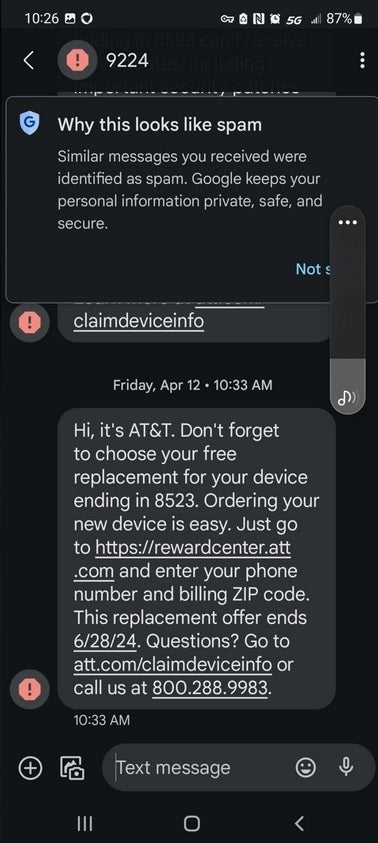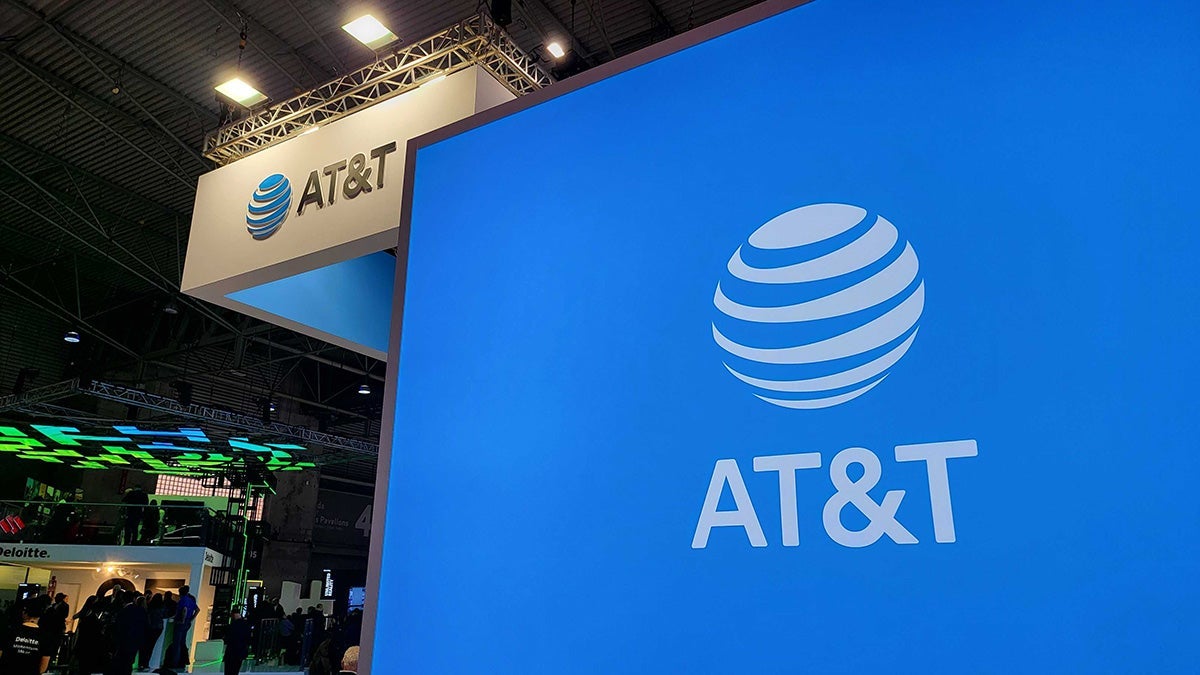The text from AT&T was a reminder from the carrier that one of the lines owned by the person who received the text was in line to receive a free replacement device from the wireless provider. All the recipient had to do was click on a link and on the webpage he was sent to, fill in his phone number and Zip code. Sounds like the makings of a SIM swap, right? Except the text, in this case, turned out to be legitimate.

Even though Google thought this text was a scam or spam, it really did come from AT&T
AT&T notes, “Your affected device should continue to work normally for calls and texts. But you won’t be able to get updates for software and apps or security patches that affect the device’s operating system. This can cause performance and security issues over time.”
Those who have received the text from AT&T about the free replacement have until June 26th, 2024 to claim it. And to claim it, you must:
- Go to the AT&T Reward Center and select ‘Access your rewards.’
- Enter the phone number that received the text message.
- Enter the billing ZIP Code.
- Claim your replacement device and place your order. AT&T will send a confirmation email and ship your replacement device to your account address.
If you’re an AT&T customer who received one of these texts, it is legit although typically we wouldn’t suggest tapping on a link found in a text message. If you’re not sure if a text or email you receive from a company is real, the best thing you can do is call the company (don’t call the phone number included in the text or email).
Sometimes a red flag means nothing. One time I received an email from a major wireless firm (one of the big three in the U.S.) that was full of spelling mistakes and grammatical errors. That is often a huge sign that a text or email is a scam or spam. So I called the company and it turned out to be legit!
